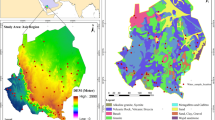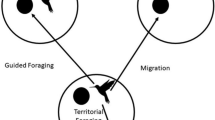Abstract
Accessing safe water is considered a vital element of effective policy for protecting health. Numerous innovative technologies are slowly replacing human labor and other state-of-the-art methods in water quality evaluation. One of the biggest challenges faced by policy-makers and other responsible Public Health Authorities is the lack of a relatively generalizable machine learning model for water quality prediction for human consumption with provision of explanations for understanding the most influential water quality parameters. Therefore, in this paper, we proposed and applied Shapley Additive Explanations (SHAP) to study and model a robust generalizable ensemble machine learning model for water quality prediction based on water potability and other water quality metrics from various water quality samples around the world. We also calibrated our final ensemble model to achieve an accuracy score of over 90% hence making it more generalizable for water quality prediction.
Access this chapter
Tax calculation will be finalised at checkout
Purchases are for personal use only
Similar content being viewed by others
References
Loucks DP, van Beek E (2017) Urban water systems. In: Water resource systems planning and management. Springer International Publishing, Cham, pp 527–565
https://www.un.org/waterforlifedecade/pdf/unwdpac_biennial_report_2010_2011.pdf
Ubah JI, Orakwe LC, Ogbu KN, Awu JI, Ahaneku IE, Chukwuma EC (2021) Forecasting water quality parameters using artificial neural network for irrigation purposes. Sci Rep 11(1):24438
Sahaya Vasanthi S, Adish KS (2019) Application of artificial neural network techniques for predicting the water quality index in the Parakai lake, Tamil Nadu, India. Appl Ecol Environ Res 17(2):1947–1958
Ahmed U, Mumtaz R, Anwar H, Shah AA, Irfan R, García-Nieto J (2019) Efficient water quality prediction using supervised machine learning. Water (Basel) 11(11):2210
Daud MK, Nafees M, Ali S, Rizwan M, Bajwa RA, Shakoor MB et al (2017) Drinking water quality status and contamination in Pakistan. Biomed Res Int 2017:1–18
Ranković V, Radulović J, Radojević I, Ostojić A, Čomić L (2010) Neural network modeling of dissolved oxygen in the Gruža reservoir, Serbia. Ecol Modell 221(8):1239–1244
Shafi U, Mumtaz R, Anwar H, Qamar AM, Khurshid H (2018) Surface water pollution detection using internet of things. In: 2018 15th international conference on smart cities: improving quality of life using ICT & IoT (HONET-ICT). IEEE
Aldhyani THH, Al-Yaari M, Alkahtani H, Maashi M (2020) Water quality prediction using artificial intelligence algorithms. Appl Bionics Biomech 2020:6659314
Prasad DVV, Venkataramana LY, Kumar PS, Prasannamedha G, Harshana S, Srividya SJ et al (2022) Analysis and prediction of water quality using deep learning and auto deep learning techniques. Sci Total Environ 821:153311
Kouadri S, Elbeltagi A, Islam ARMT, Kateb S (2021) Performance of machine learning methods in predicting water quality index based on irregular data set: application on Illizi region (Algerian southeast). Appl Water Sci 11(12)
Haghiabi AH, Nasrolahi AH, Parsaie A (2018) Water quality prediction using machine learning methods. Water Qual Res J Can 53(1):3–13
Park J, Lee WH, Kim KT, Park CY, Lee S, Heo T-Y (2022) Interpretation of ensemble learning to predict water quality using explainable artificial intelligence. Sci Total Environ 832:155070
Shamshirband S, Jafari Nodoushan E, Adolf JE, Abdul Manaf A, Mosavi A, Chau K-W (2019) Ensemble models with uncertainty analysis for multi-day ahead forecasting of chlorophyll a concentration in coastal waters. Eng Appl Comput Fluid Mech 13(1):91–101
Barredo Arrieta A, Díaz-Rodríguez N, Del Ser J, Bennetot A, Tabik S, Barbado A et al (2020) Explainable Artificial Intelligence (XAI): concepts, taxonomies, opportunities and challenges toward responsible AI. Inf Fusion 58:82–115
Başağaoğlu H, Chakraborty D, Lago CD, Gutierrez L, Şahinli MA, Giacomoni M et al (2022) A review on interpretable and eXplainable Artificial Intelligence in hydroclimatic applications. Water (Basel) 14(8):1230
Wang R, Kim J-H, Li M-H (2021) Predicting stream water quality under different urban development pattern scenarios with an interpretable machine learning approach. Sci Total Environ 761:144057
Hellen N, Marvin G (2022) Explainable AI for safe water evaluation for public health in urban settings. In: 2022 international conference on innovations in science, engineering and technology (ICISET). IEEE
Hellen N, Marvin G (2021) Interpretable feature learning framework for smoking behavior detection. arXiv [csCV]
Marvin G, Alam MGR (2021) Cardiotocogram biomedical signal classification and interpretation for fetal health evaluation. In: 2021 IEEE Asia-Pacific conference on computer science and data engineering (CSDE). IEEE
Vermeire T, Brughmans D, Goethals S, de Oliveira RMB, Martens D (2022) Explainable image classification with evidence counterfactual. Pattern Anal Appl. http://dx.doi.org/10.1007/s10044-021-01055-y
Kadiwal A (2021) Water quality
Author information
Authors and Affiliations
Corresponding author
Editor information
Editors and Affiliations
Rights and permissions
Copyright information
© 2023 The Author(s), under exclusive license to Springer Nature Singapore Pte Ltd.
About this paper
Cite this paper
Hellen, N., Sabuj, H.H., Ashraful Alam, M. (2023). Explainable AI and Ensemble Learning for Water Quality Prediction. In: Ahmad, M., Uddin, M.S., Jang, Y.M. (eds) Proceedings of International Conference on Information and Communication Technology for Development. Studies in Autonomic, Data-driven and Industrial Computing. Springer, Singapore. https://doi.org/10.1007/978-981-19-7528-8_19
Download citation
DOI: https://doi.org/10.1007/978-981-19-7528-8_19
Published:
Publisher Name: Springer, Singapore
Print ISBN: 978-981-19-7527-1
Online ISBN: 978-981-19-7528-8
eBook Packages: Intelligent Technologies and RoboticsIntelligent Technologies and Robotics (R0)




